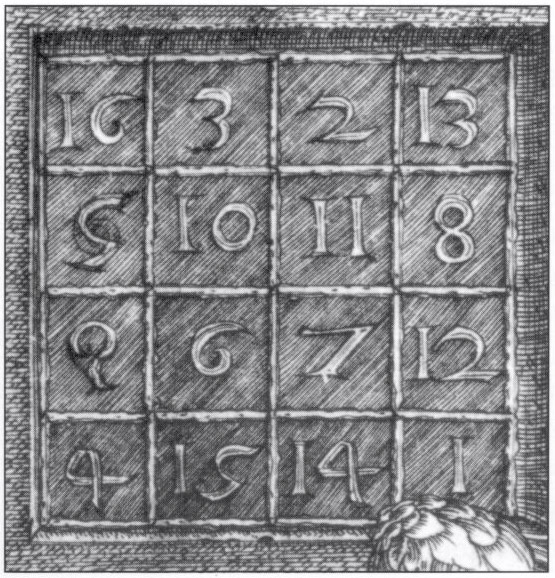Difference between revisions of "Numerology"
Occultwiki (talk | contribs) |
Occultwiki (talk | contribs) |
||
| Line 139: | Line 139: | ||
Scientific theories are sometimes labeled "numerology" if their primary inspiration appears to be a set of patterns rather than scientific observations. This colloquial use of the term is quite common within the scientific community and it is mostly used to dismiss a theory as questionable science. | Scientific theories are sometimes labeled "numerology" if their primary inspiration appears to be a set of patterns rather than scientific observations. This colloquial use of the term is quite common within the scientific community and it is mostly used to dismiss a theory as questionable science. | ||
The best known example of "numerology" in science involves the coincidental resemblance of certain large numbers that intrigued mathematical physicist Paul Dirac, mathematician Hermann Weyl and astronomer Arthur Stanley Eddington. These numerical coincidences refer to such quantities as the ratio of the age of the universe to the atomic unit of time | The best known example of "numerology" in science involves the coincidental resemblance of certain large numbers that intrigued mathematical physicist Paul Dirac, mathematician Hermann Weyl and astronomer Arthur Stanley Eddington. These numerical coincidences refer to such quantities as: | ||
* the ratio of the age of the universe to the atomic unit of time. | |||
* the number of electrons in the universe. | |||
* the difference in strengths between gravity and the electric force for the electron and proton. | |||
* the distance of [[Sirius]] from [[earth]] and Armstrong's Economic Confidence Model. | |||
[[Category:Numerology]] | [[Category:Numerology]] | ||
Latest revision as of 20:26, 11 February 2025

Numerology (known before the 20th century as arithmancy) is the belief in a mystical relationship between a number and one or more coinciding events. It is also the study of the numerical value, via an alphanumeric system, of the letters in words and names. When numerology is applied to a person's name, it is a form of onomancy. It is often associated with astrology and divination.
There are several numerology systems which assign numerical value to the letters of an alphabet. Examples include the Abjad numerals in Arabic, Hebrew numerals, Armenian numerals, and Greek numerals.
History
The practice of gematria, assigning numerical values to words and names and imputing those values with religious meaning, dates back to antiquity. An Assyrian inscription from the 8th century BC, commissioned by Sargon II declares "the king built the wall of Khorsabad 16,283 cubits long to correspond with the numerical value of his name."
Rabbinic literature used gematria to interpret passages in the Hebrew Bible.
Greece
The practice of using alphabetic letters to represent numbers developed in the Greek city of Miletus, and is thus known as the Milesian system. Early examples include vase graffiti dating to the 6th century BCE. Aristotle wrote that the Pythgoraean tradition, founded in the 6th century by Pythagoras of Samos, practiced isopsephy, the Greek predecessor of Hebrew gematria. Pythagoras was a contemporary of the philosophers Anaximander, Anaximenes, and the historian Hecataeus, all of whom lived in Miletus, across the sea from Samos.
The Milesian system was in common use by the reign of Alexander the Great (336–323 BCE) and was adopted by other cultures during the subsequent Hellenistic period. It was officially adopted in Egypt during the reign of Ptolemy II Philadelphus (284–246 BCE).
Christianity
In the early years of Christianity, the Church Fathers commented extensively on numerology. Influenced mainly by Biblical precepts, the Fathers gave attention to the sacredness and mystical significance not only of certain numerals in themselves but also of the numerical totals given by the constituent letters with which words were written. An example is in the early Epistle of Barnabas. This document appeals to The Book of Genesis as mystically pointing to the name and self-oblation of the coming Messiah.
In 325 AD, following the First Council of Nicaea, departures from the beliefs of the state church were classified as civil violations within the Roman Empire. Numerology, referred to as isopsephy, remained in use in conservative Greek Orthodox circles.
Medieval and Renaissance periods
Some alchemical theories were closely related to numerology. For example, Arab alchemist Jabir ibn Hayyan (died c. 806−816) framed his experiments in an elaborate numerology based on the names of substances in the Arabic language.
Numerology is prominent in Sir Thomas Browne's 1658 literary discourse The Garden of Cyrus. Throughout its pages, the author attempts to demonstrate that the number five and the related quincunx pattern can be found throughout the arts, in design, and in nature – particularly botany.
In Islam, some approaches to understanding the meanings of the Qur'an include the understanding of numerical meanings, numerical symbols and their combination with purely textual approaches.
Hebrew and Greek systems
The practice within Jewish tradition of assigning mystical meaning to words based on their numerical values, and on connections between words of equal value, is known as gematria.
In the Pythagorean method (which uses a kind of place-value for number-letter attributions, as does the ancient Hebrew and Greek systems), the letters of the modern Latin alphabet are assigned numerical values 1 through 9.
Agrippa's system
Heinrich Cornelius Agrippa applied the concept of numerology to the classical Latin alphabet in the 16th century in Three Books of Occult Philosophy. His system mapped the letters in accordance with the Latin alphabet's place-value at that time. Note that the letters U, J, and W were not commonly considered part of the Latin alphabet.
| 1 | 2 | 3 | 4 | 5 | 6 | 7 | 8 | 9 |
|---|---|---|---|---|---|---|---|---|
| A | B | C | D | E | F | G | H | I |
| 10 | 20 | 30 | 40 | 50 | 60 | 70 | 80 | 90 |
| K | L | M | N | O | P | Q | R | S |
| 100 | 200 | 300 | 400 | 500 | 600 | 700 | 800 | 900 |
| T | "V" | X | Y | Z | "I" | "V" | "HI" | "HV" |
Chaldean method
A lesser known method, more popular in the nineteenth and early twentieth century, is the Chaldean method; in this context, "Chaldean" is an old-fashioned name for the Aramaic languages. In the Chaldean method number 9 is not used in the calculations, at least in practice. It is left out because it is thought to be divine and sacred, and therefore unassignable.
This method is radically different from the Pythagorean as letters are assigned values based on equating Latin letters with letters of the Hebrew alphabet in accordance with sound equivalents.
Biblical numerology
Biblical numerology is the use of numerology in the Bible to convey a meaning outside of the numerical value of the actual number being used.
Recurring values
- Three and a half: A broken seven or a symbolic week that "is arrested midway in its normal course." Also signifies the amount of time that the Temple is given over to heathen worship. Three and a half years correspond to 42 months or 1,260 days.
- Ten: Can be used to signify totality. There are ten fingers and ten toes, the total number of digits found on humans, thus our Base 10 numerical system.
- Six: Used as a final hallmark in a series leading to a seven (e.g. mankind is created on the sixth day in Genesis, out of the seven days of creation). Sometimes, it is used to refer to a value falling short of a seven. For example, the number of the beast is 666 which represents its evil and having fallen short of the divinely perfect number of seven.
- Seven: Can be used to signify "perfection" or "completeness." Examples include the seven days of creation and so seven days that make up a week, and the seven lamps on the Temple Menorah.
- Eight: A "new life" or a new beginning. There are eight people on Noah's ark, circumcision takes place on the eighth day, the eight thousandth year represents the end.
- Twelve: Reflects the 12 lunar months in a lunar year and refers to completeness, often associated with the people of God. There are twelve tribes of Israel and Jesus made the decision to have twelve disciples.
- Forty: Represents a generation or a full period of time.
Book of Revelation
The New Testament Book of Revelation contains a large amount of numeric values, leading many people to believe the numbers may provide clues to when or how the events described will unfold.
- Three and a half years and its variants of 42 months and 1,260 days are employed throughout Revelation.
- Four refers to the four living creatures around God's throne and the fourfold division of humanity representing all of creation. The Earth has four corners representing north, south, east, and west. Likewise, New Jerusalem, representing the new earth, has four sides.
- Six hundred sixty-six (666) is the number of the beast from the sea. The number of six has the hallmarks of the perfect seven, but it falls short. It is not the ultimate (i.e., seven); only the penultimate (i.e., six).
- Seven references the seven churches, seven bowls, seven seals, seven trumpets, seven thunders, Seven Spirits of God, seven stars, seven lampstands, seven eyes and horns of the Lamb of God, seven heads and diadems of the dragon, and seven heads of the beast.
- Ten is associated with power: the red dragon and the beast from the sea each have ten horns, signifying their claim to total power. The beast from the sea has ten diadems on its ten horns, emblematic of its claim to unlimited or total ruling authority.
- Twelve refers to the number of angels, number of stars, twelve angels at twelve gates each of which have the names of the twelve apostles inscribed and is adorned with twelve jewels, and the Tree of Life has twelve kinds of fruit. The New Jerusalem measures 12,000 stadia on each side.
Use in science
Scientific theories are sometimes labeled "numerology" if their primary inspiration appears to be a set of patterns rather than scientific observations. This colloquial use of the term is quite common within the scientific community and it is mostly used to dismiss a theory as questionable science.
The best known example of "numerology" in science involves the coincidental resemblance of certain large numbers that intrigued mathematical physicist Paul Dirac, mathematician Hermann Weyl and astronomer Arthur Stanley Eddington. These numerical coincidences refer to such quantities as:
